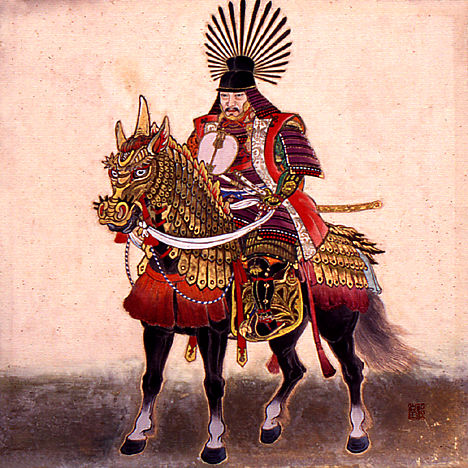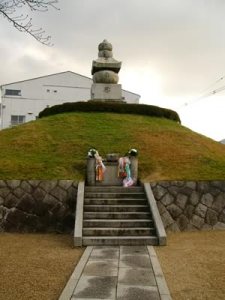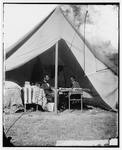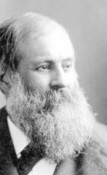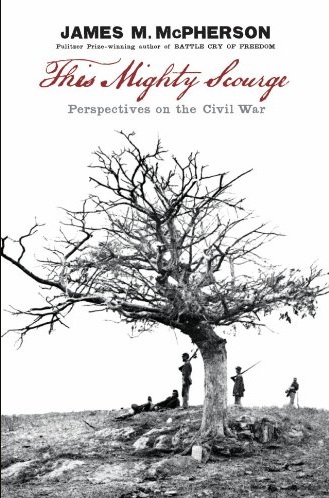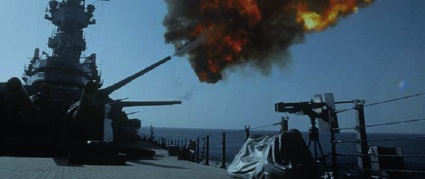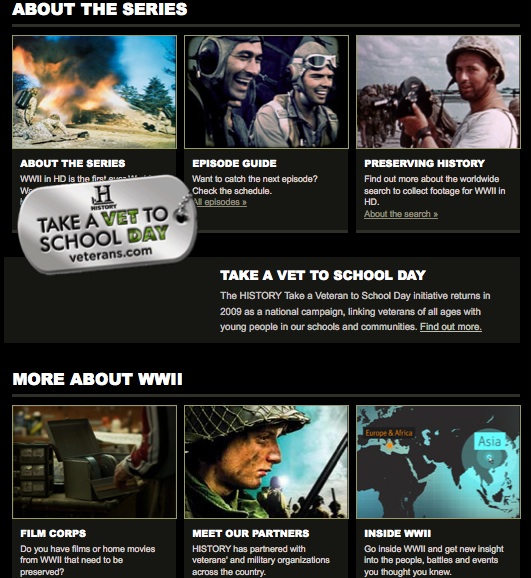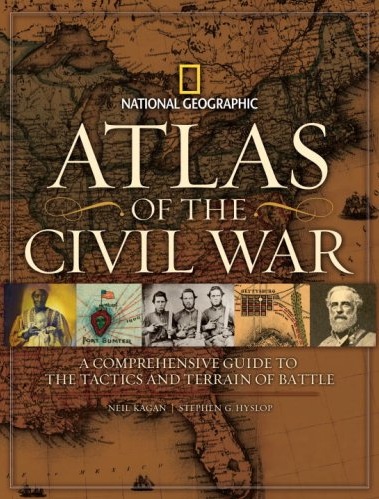Archive for November 2009
New: A Dragon’s Head and a Serpent’s Tail: Ming China and the First Great East Asian War, 1592-1598
 It’s always a pleasure to receive a book about military history that’s a bit outside of my primary focus because invariably I learn something that informs my study. The good folks
It’s always a pleasure to receive a book about military history that’s a bit outside of my primary focus because invariably I learn something that informs my study. The good folks ![]() at the University of Oklahoma Press sent me a review copy of a new book by Kenneth M. Swope, A Dragon’s Head and a Serpent’s Tail: Ming China and the First Great East Asian War, 1592-1598. The book becomes Volume 20 of the Campaigns & Commanders Series edited by Gregory J. W. Urwin from Temple University.
at the University of Oklahoma Press sent me a review copy of a new book by Kenneth M. Swope, A Dragon’s Head and a Serpent’s Tail: Ming China and the First Great East Asian War, 1592-1598. The book becomes Volume 20 of the Campaigns & Commanders Series edited by Gregory J. W. Urwin from Temple University.
Professor Swope (left) has labeled this conflict, which included Japan, China, and Korea, as “the first great Asian War.” His is the first full-length scholarly study in English of a six year military event was pivotal to the history of warfare, drove advancement in military technologies, and produced naval battles that rivaled any in Europe.
Impressive is an extremely rich Bibliography, solid Notes, and a “Selected Chinese Character List. Swope also provides a “Dramatis Personae” section to assist with keeping the long list of players straight, a table of “Chinese Weights and Measures,” and a “Timeline of the War.” Eleven maps and fifteen illustrations are also included, the latter not for the squeamish.
I’ll be making time to read. Here’s a snippet from the Introduction…
Tucked away in a back alley of Kyoto, largely ignored amid the temples, pagodas, castles, and teahouses, stands a curious monument to the cold, calculating callousness of war in early modern East Asia. Called “Kyoto‘s least mentioned and most-often-avoided tourist attractions” by one scholar, the Mimizuka (Mound of Ears) and children’s playground actually contains what is left of thousands of severed and pickled Chines and Korean noses sent back to Japan’s overlord and instigator of the First Great East Asian War of 1592-98, Toyotomi Hideyoshi (1536-98).
Because heads, the normal proof offered to gain rewards for one’s deeds in battle in Japan, were too large and unwieldy to ship overseas, the Japanese resorted to severing the noses of slain foes and sending them home to satisfy the kampaku’s thirst for revenge against those who refused to accept his primacy in East Asia. Hideyoshi‘s men were assigned a quota of three Korean (or Chinese) noses per soldier. Although modern estimates vary, it is generally accepted that 100,000-200,000 noses eventually reached Japan, though some Koreans apparently survived the ordeal and spent the rest of their days without noses.
A photo of a Mimizuka shrine. Used with the permission of Nils Ferry (planetkyoto.com). {{CopyrightedFreeUse}})
Lincoln’s Impact on Military Operations
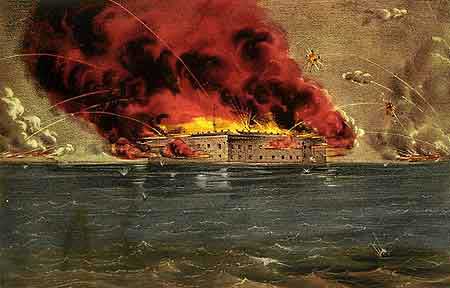
Bombardment of Fort Sumter, Charleston Harbor, a color lithograph by Currier & Ives; (SCALA/Art Resource)
In class, we’ve been discussing how the decisions of the two commanders-in-chief during the American Civil War impacted events at the operational level. Modern scholars have challenged the notion that Lincoln simply stayed involved in military details until he found the right general (Grant). Eliot Cohen posits that’s “Lincoln exercised a constant oversight of the war effort from beginning to end.”(1) This intense interest in providing direction can be seen as early as the events surrounding the attack on Fort Sumter. Lincoln’s order of the nonviolent resupply of the fort, which caused the Confederates to fire the first shot and thus initiate the war, demonstrates Lincoln’s willingness to go against the advice of senior commanders. Equally important, it showed his considerable ability at playing the game of strategy. Cohen summed it up well by calling Lincoln’s move “characteristically cunning” and revealing of “a steely willingness to accept the hazards of war.”(2)
Lincoln continued to immerse himself in operational details, stepping back only to a degree when General Grant became General-in-chief but certainly not completely. Lincoln carefully reviewed dispatches and, as has been well documented, literally camped in the telegraph office during battles. In fact, he qualified as a micro-manager to some degree. As such, one of the ways in which his leadership impacted operation was by his dismissal of generals who didn’t perform. “By comparison with our recent presidents, Lincoln was an exceptionally unforgiving boss.”(3) He also took considerable personal interest in the technological advancements that took place prior to and during the war. His personal influence could make things happen as it did with the development of river canon, which helped to win control by the Union of the Mississippi River and southern ports.
Lincoln was so intent upon staying informed of field activities that he installed journalist Charles Dana as, effectively, a spy in Grant’s camp while he was assigned in the west. Dana, who even had his own cipher for sending reports back to Stanton, was also dispatched to observe and report back on the command abilities of General Rosecrans. Lincoln put Dana back in Grant’s camp later in the war even after Grant had demonstrated success and earned Lincoln’s trust. This fact further dispels the notion that Lincoln simply turned over the war’s higher direction to Grant.(4) In fact, Cohen posits that “Lincoln did not merely find his generals; he controlled them. He molded the war to its last days, and he intended to dominate the making of peace at its end.” (5)
(1) Eliot A. Cohen, Supreme Command: Soldiers, Statesmen and Leadership in Wartime, (London: Free Press, 2002), 19.
(2) Ibid., 20.
(3) Ibid., 24.
(4) Ibid., 51.
(5) Ibid., 21.
New in Paperback – This Mighty Scourge: Perspectives on the Civil War
The good folks at Oxford University Press recently sent me a copy of the new paperback edition of James McPherson’s This Mighty Scourge: Perspectives on the Civil War. First published in 2007, it comprises 16 essays in which McPherson attempts to answer the following questions:
- Why did the war come?
- What were the war aims of each side?
- What strategies did they employee to achieve these aims?
- How do we evaluate the leadership of both sides?
- Did the war’s outcome justify the immense sacrifice of lives?
- What impact did the experience of war have on the people who lived through it?
- How did later generations remember and commemorate that experience?
- Author: James M. McPherson
- Publisher: Oxford University Press
- ISBN13: 9780195392425
- ISBN10: 0195392426
- Paperback, 272 pages
- Sep 2009
I read the hardback version in 2007 and can highly RECOMMEND.
FYI – Amazon has the paperback version available for here for $12.21.
New Acquisition – Supreme Command: Soldiers, Statesmen, and Leadership in Wartime
![]() I’ve made a number of new acquisitions over the past few weeks. I bought this book to assist with an assignment on the command skills of Abraham Lincoln. Author Eliot A. Cohen (left), also examines the records of Georges Clemenceau, Winston Churchill and David Ben-Gurion in an effort to synthesize why they stand above others as leaders in time of war. So far, after reading the first few chapters, I’m quite impressed. Full disclosure: I own the 2002 paperback version of this book published in the UK by The Free Press. I recently purchased the audio version from Audible.com published by Blackstone Audiobooks and narrated by Robert Whitfield (a.k.a. Simon Vance).
I’ve made a number of new acquisitions over the past few weeks. I bought this book to assist with an assignment on the command skills of Abraham Lincoln. Author Eliot A. Cohen (left), also examines the records of Georges Clemenceau, Winston Churchill and David Ben-Gurion in an effort to synthesize why they stand above others as leaders in time of war. So far, after reading the first few chapters, I’m quite impressed. Full disclosure: I own the 2002 paperback version of this book published in the UK by The Free Press. I recently purchased the audio version from Audible.com published by Blackstone Audiobooks and narrated by Robert Whitfield (a.k.a. Simon Vance).
- Author: Eliot A. Cohen
- Published: 2003-09-09
- Publisher: Anchor
- ISBN13: 9781400034048
- Binding: Paperback
- 320 pages
WWII in HD – Recommend
I’ve been catching the WWII in HD series running on The History Channel when I can today. Much of the footage has never been seen on television. Good study guide on History.com along with other supporting information.
RECOMMEND!
National Geographic’s New Atlas of the Civil War
- Hardcover: 256 pages
- Publisher: National Geographic (October 20, 2009)
- Language: English
- ISBN-10: 1426203470
- ISBN-13: 978-1426203473
- Product Dimensions: 13.7 x 10.7 x 1.1 inches
The good folks at National Geographic sent me a review copy of their new Atlas of the Civil War: A Comprehensive Guide to the Tactics and the Terrain of Battle. I’m impressed. This is one of those books that as a kid I would spread out on the floor in front of the fire and lose myself in for hours. It’s FULL size means just that. Images that many of us have seen for years, and many we’ve never seen, are spread across pages over a foot high. So when looking at the bloated bodies of dead warriors near the Peach Orchard of Gettysburg’s Battlefield, it becomes immediately obvious that none have shoes, scavengers having carried them away.
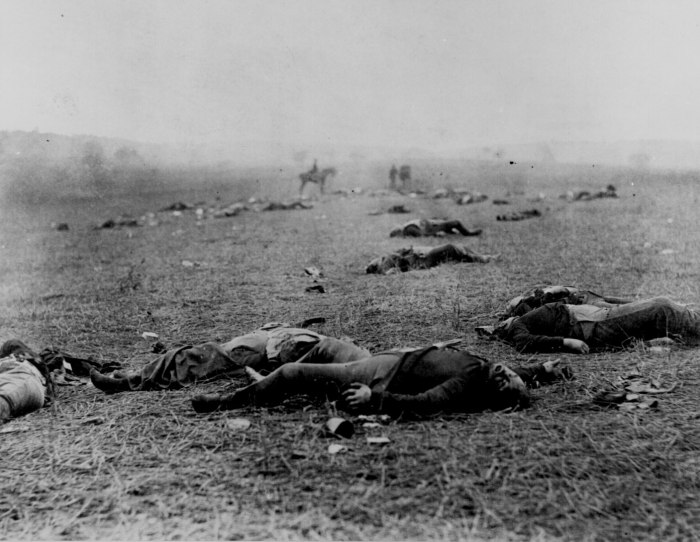
Union and Confederate dead, Gettysburg Battlefield, Pa., July 1863. Photographed by Timothy H. O'Sullivan. 165-SB-36. National Archives
Plainly visible among the troops and civilians crowded inside the walls of Washington’s Old Penitentiary on July 7, 1865 (below) to witness the hanging of Lincoln assassination conspirators, is a young boy, apparently unable to turn away from the gallows.
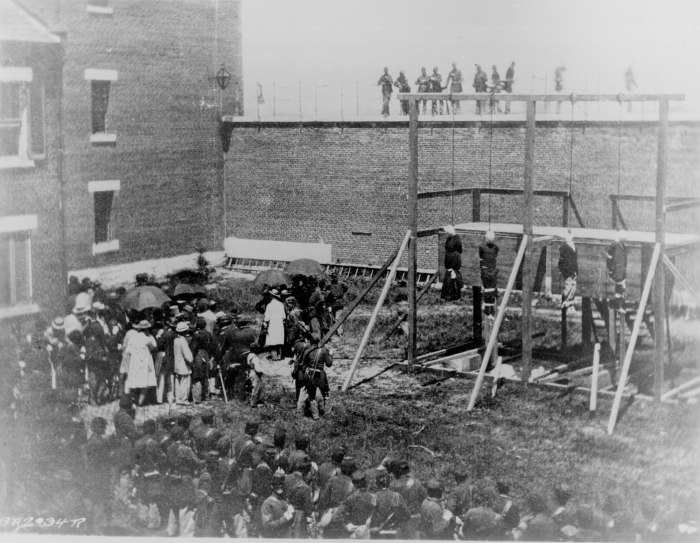
Execution of the four persons condemned as co-conspirators in Lincoln's assassination, July 7,1865. Photographed by Alexander Gardner. 111-BA-203 National Archives
But even more impressive are the maps. There are 88 rare period maps, many published for the first time, and 34 new maps created by the staff of the National Geographic’s cartographers led by Carl Mehler. All are in a large format which makes them entirely readable. Almost a dozen orders of battle are also provided along with biographies and timelines.
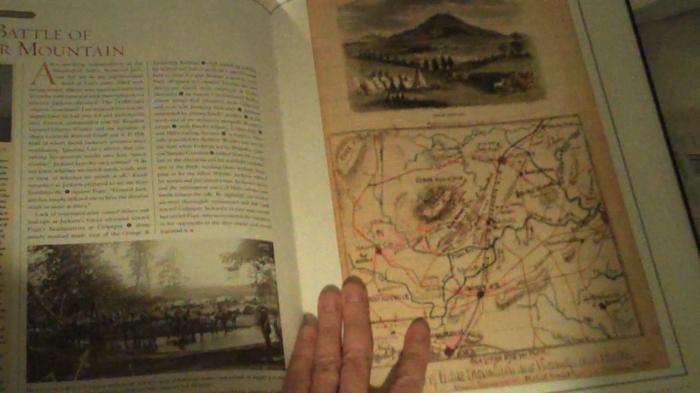
Editor Neil Kagan and historians Stephan G. Hyslop and Harris J. Andrews, who also collaborated on National Geographic’s Eyewitness to the Civil War, have provided excellent commentary and a rich story of the war from beginning to end. Carol Norton, as art director, led the creative vision for what is really a quite remarkable book of art.
I say BRAVO. Highly recommend.
